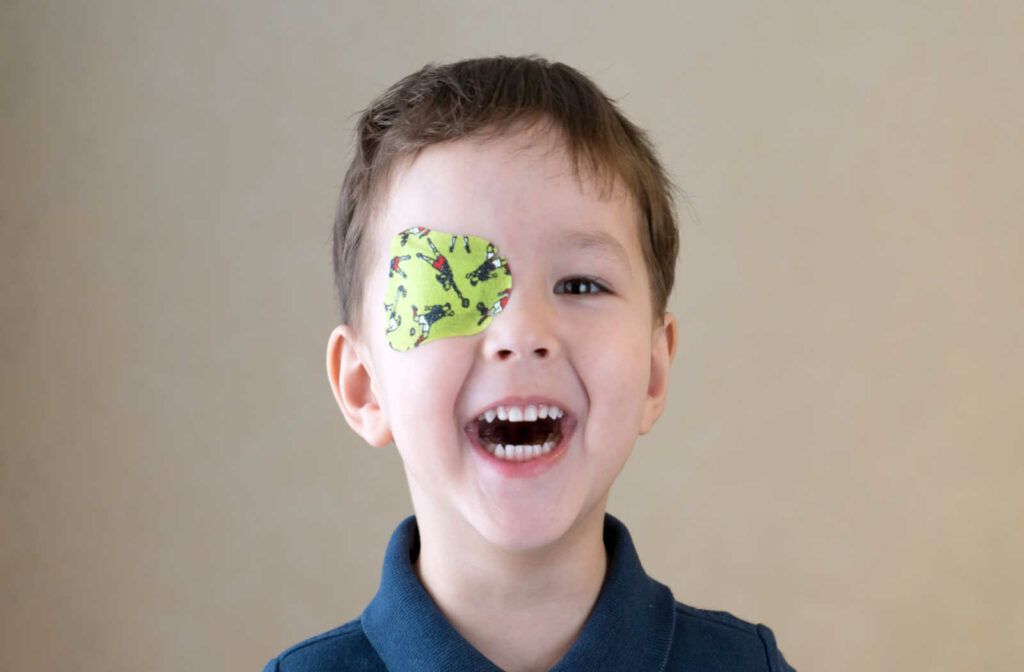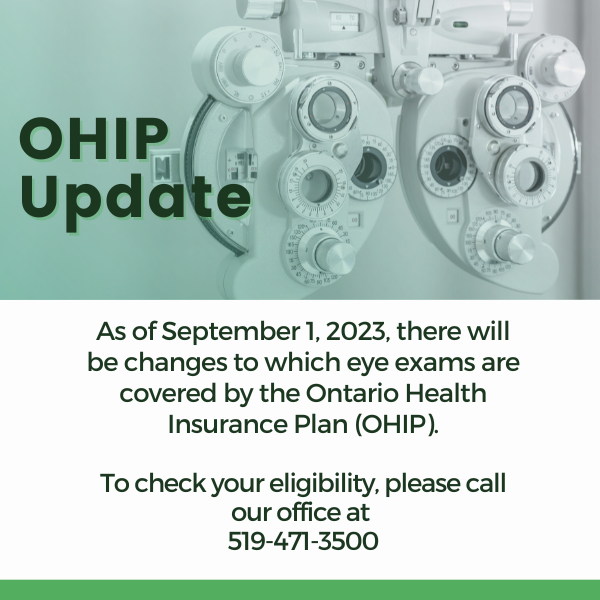Lazy eye is a condition that demonstrates the importance of getting comprehensive eye exams as recommended by your optometrist and the Canadian Association of Optometrists. As we’ll see below, it’s especially important that children receive the recommended exams as they mature.
This article explores what exactly lazy eye is, why it develops, when it needs to be treated, and a few available treatment options.
What Is Lazy Eye?
Lazy eye is also known as amblyopia. It’s a condition that affects one of a person’s eyes, causing reduced vision. Abnormal vision development early in life can cause the weaker or “lazy” eye to wander.
Causes of Lazy Eye
During vision development in a child’s life, nerve pathways between the retina and the brain change. This can cause weakness in the eye, which may lead to that eye receiving fewer visual signals. With this imbalance between the eyes, they may begin working together less effectively. Eventually, the brain may ignore input from the affected eye.
Anything that blurs vision in one eye or causes the eyes to cross can kickstart the development of amblyopia. However, there are several common conditions that researchers have connected to the condition:
- Imbalanced muscles: When the muscles that hold the eyes in position become imbalanced, they may not allow the eyes to work together. This is one of the most common causes of lazy eye.
- Significant prescription differences: If a child’s eyes have significantly different prescriptions, amblyopia could develop. In a situation like this, refractive errors such as nearsightedness, farsightedness, or astigmatism can be corrected to prevent imbalance between the eyes.
- Deprivation: In some severe cases, an infant can be born with a cataract, which is a cloudy lens that impedes vision. When this happens, there is an imbalance between the eyes from birth. Deprivation amblyopia should be addressed quickly after birth to prevent permanent vision impairment.
Symptoms of Lazy Eye
When we think of someone having a lazy eye, we often associate it with one eye not being where it should be. While this is a common symptom, especially if the condition is allowed to progress, there are other signs.
Some common symptoms include:
- Eyes not working together
- A decline in depth perception
- Shutting one eye or squinting to do things
- Squinting to see
With all these symptoms in mind, it’s important to note that sometimes they may not be immediately evident. A comprehensive eye exam is the best way to confirm the presence of amblyopia.
Earlier Treatment Is Better
As a general rule, the earlier a disease or condition is identified in our bodies, the better we can treat it. This remains true with a lazy eye because it’s much easier to treat the younger the child is.
When Is It Too Late to Treat Lazy Eye?
Fortunately, with technological advances, lazy eye can now be treated in children, teens, and even adults. However, it’s worth noting that the highest treatment success is 17 and under. One of the primary reasons for this is eye development. While a child’s eyes develop naturally, it’s generally easier to manipulate them—in this case, correct the lazy eye.
Treatment for Lazy Eye
There are several options for treating amblyopia. Certain treatments are better in different circumstances. So, if this is an issue that you are dealing with, your optometrist can help you with the best option for your situation.
Glasses
One of the easiest ways to correct lazy eye is through prescription glasses or contacts. By correcting the refractive error, both eyes are encouraged to work together.
Atropine Eye Drops
Atropine eye drops cause blurry vision because they temporarily paralyze the muscles in the eye responsible for focusing. When the drops are put in your strong eye, the weak eye is forced to work harder, thus improving muscle function.
Eye Patch
An eye patch works similarly to atropine eye drops in the sense that it reduces the effectiveness of your strong eye, which stimulates the weak eye. Typically the patch is only worn for 2–6 hours per day.
Surgery
Surgery may be the most effective solution In situations like with deprivation amblyopia caused by cataracts or a droopy eyelid.
Find Out More About Treating Lazy Eye
Not too long ago, many people believed that lazy eye, or amblyopia, couldn’t be treated in older teens or adults. However, this has changed as our understanding of the condition has improved.
If you or someone you know struggles with vision problems due to a lazy eye, reach out to us at Byron Optometry. Our professional team is available to answer your questions and book you in with one of our experienced optometrists.



